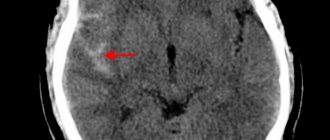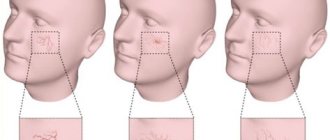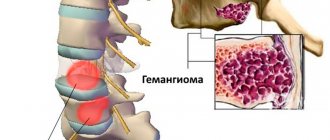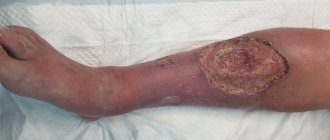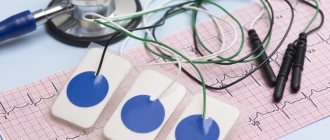Intracranial hypertension (ICH) is a disease in which pressure levels inside the skull increase. There are many reasons for this pathological condition, and only a specialist can determine the main one. Intracranial hypertension syndrome manifests itself with the same type of symptoms, its symptoms are especially pronounced in children.
The intensity of manifestations depends on the causes, severity of the disease and the duration of existing disorders. Treatment begins after diagnosis and can be medicinal or surgical. Today we need to understand why this condition occurs, how it manifests itself in adults and children, and what are the methods of combating the pathology.
What kind of disease is this
To explain what cerebral hypertension is, you need to talk about why disturbances occur in the cavity of the cranium, causing symptoms characteristic of the pathology. Cerebrospinal fluid, called cerebrospinal fluid, is produced and stored in the cerebral ventricles. Liquor washes vital organs and delivers to them useful substances necessary for normal functioning.
The fluid is constantly renewed and circulates between several membranes that protect the spinal cord and brain (CB). These slits have a microscopic diameter, but with normal functioning of the system as a whole, the cerebrospinal fluid is able to circulate freely, while simultaneously stabilizing the pressure level. When the circulation of cerebrospinal fluid is disrupted for a number of pathological external and internal reasons, the characteristic symptoms of the disease appear.
Most often, problems arise with increased production of cerebrospinal fluid, due to impaired outflow and poor absorption into the bloodstream. If the flow of arterial blood is of poor quality or it stagnates in the venous section, the total amount of blood in the cranial cavity increases, resulting in increased intracranial pressure. Sometimes symptoms develop due to enlargement of brain tissue due to swelling of nerve cells and the space between them, or due to the formation of a tumor.
Normally, the pressure inside the skull is 2–6 mmHg. Art. in infants, 3-7 mm Hg. Art. in adolescents and 5–15 mm Hg. Art. in adults. If the pressure level clearly deviates from the norm, the symptoms of the pathology become pronounced, and the patient needs a course of treatment to stabilize his condition.
Causes
The most common causes of hypertension in adult patients are:
Primary hypertension
- traumatic brain injuries resulting from accidents, especially with the formation of intracranial hematomas;
- circulatory disorders in the brain caused by stroke, the formation of blood clots in the sinuses of the dura mater of the brain;
- tumor processes in the cavity of the cranium, including metastases from neoplasms localized in neighboring areas;
- infectious and inflammatory diseases (encephalitis, suppuration, meningococcal infection);
- congenital abnormal structure of cerebral capillaries, parts of the brain or the skull itself (closure of the channels through which cerebrospinal fluid flows from the brain);
- metabolic disorders and poisoning by chemicals (lead and mercury vapors, ethyl alcohol, carbon monoxide, own decay products, for example, with cirrhosis of the liver);
- pathologies leading to disturbances in the outflow of blood from the venous network (heart defects, tumors in the neck, mediastinum, diseases of the bronchopulmonary system occurring against the background of obstruction).
Of course, not all the reasons that provoke a pathological increase in pressure levels inside the skull are listed. Other factors are less common and require a diagnostic examination to determine them.
Why does pathology occur in children?
The development of the disease in children is caused by a violation of the outflow of liquor fluid from the brain structures, which increases the level of pressure in the cranial cavity. The pathological condition is provoked by the following reasons:
- lack of oxygen while in the womb and passing through the birth canal;
- birth injuries with damage and even rupture of the cerebral cisterns - during caesarean section and removal of the newborn from the birth canal with forceps;
- congenital anomalies - Arnold-Chiari syndrome, when the occipital lumen of the medulla oblongata narrows, due to which the cerebrospinal fluid does not flow from the cranial cavity;
- poisoning by toxins and asphyxia - when harmful substances pass through the blood-brain barrier and affect the fetus, a lack of oxygen is created, affecting some of the brain cells;
- infectious diseases, such as meningitis and brain tumors;
- spinal injuries in the cervical region;
- cerebral hemorrhages - they are provoked by injuries during childbirth and hemorrhagic vasculitis.
When the functioning of the thyroid gland is impaired or excessive production of hormones by the adrenal cortex, the blood vessels that supply different parts of the brain are affected. They undergo spasm, which is why intracranial hypertension gradually develops.
The indirect cause of the syndrome is considered to be excessive body weight in infants and obesity
How it manifests itself
The main symptoms of ICH in adult patients are headaches of moderate or severe intensity. Symptoms most often appear in the morning, since while in a horizontal position, the outflow of cerebrospinal fluid from the skull is even more difficult. The pain is dull, aching in nature, intensifies during coughing, physical activity, and is accompanied by a feeling of pressure on the eyeballs.
If cranial hypertension is moderate, there may simply be a feeling of heaviness in the head. Also, headaches are accompanied by attacks of nausea, which do not depend on the time of eating. The urge to vomit is observed during exacerbations of pain in the head, especially in the morning, after waking up, then they occur on an empty stomach. Sometimes the amount of vomit is quite copious, after which the person feels relief.
Further, in the absence of treatment, vision problems occur due to constant tension in the fundus of the eye and spasm of the vessels located there. At first, a person notices a distortion of the picture, a lack of clarity. Vision is blurred, objects in the eyes may appear double, but such phenomena pass on their own. As the disease progresses, such symptoms appear more and more often, and movements of the eyeballs in any direction bring pain.
Indirect signs of intracranial hypertension in adults are changes in well-being as a reaction to weather conditions, irritability, and a decline in the physical and emotional capabilities of the body. A person’s mood often changes, he becomes whiny, hypersensitive, sleeps poorly and feels unwell during rain and thunderstorms.
Moderate hypertension is also manifested by dysfunction of the autonomic parts of the nervous system - increased sweating, increased heart rate, and surges in blood pressure. The pronounced picture of the disease occurs against the background of constant intense pain in the head and nausea that accompany the listed symptoms.
How dangerous is intracranial hypertension if you do not pay attention to its symptoms and do not start timely therapy? The patient develops daily attacks of morning vomiting and severe headaches. If pain is accompanied by hiccups, this sign indicates the presence of a neoplasm in the posterior cranial fossa.
As the pathology progresses, signs of depression of mental functions increase - the patient becomes inhibited, his consciousness is impaired until he completely falls into a coma. There are regular surges in blood pressure with a decrease in breathing, while the heart rate drops to 50–60 times per minute. In advanced cases, generalized convulsive syndrome appears.
Symptoms in children
If the damage to the ventricles of the brain is mild, symptoms may be mild. But a neurologist must notice it at the first appointment at the clinic, at the age of 1 month. Later, parents themselves note some signs of ICH in their baby:
- enlargement of the head and protrusion of the eyeballs - with a severe degree of the disease, the skull grows in volume several times, and the eyelids cannot completely close during sleep, the pupils are visible between them;
- pulsation in the area of the large fontanel and a pronounced venous network on the surface of the scalp;
- regurgitation up to 3-4 times a day, occurring due to injury to the nerve receptors responsible for the functions of the gastrointestinal tract;
- poor sleep, frequent awakenings, deterioration of health when lying on your back - this is explained by a deterioration in the outflow of cerebrospinal fluid and the appearance of severe headaches;
- walking on tiptoes;
- lag in psychophysical development - in comparison with peers, the child later begins to stand on his feet, crawl, sit, roll over from back to stomach, and talk.
Children of kindergarten and school age often complain of headaches, and have attacks of nausea and vomiting even in the absence of food intake. Academic performance deteriorates, the child cannot concentrate on simple tasks, attention and concentration are reduced. Speech functions also remain not fully developed - children with intracranial hypertension syndrome often need the help of a speech therapist, they burr, mix up words, and “chew” endings.
In adolescents, the symptoms are more pronounced compared to schoolchildren - fainting occurs due to increased weather sensitivity and headaches. Regular changes in blood pressure appear. Teenagers become prone to depression, which is why there are frequent scandals with parents and peers. They need help from psychologists.
Main symptoms and signs
The main manifestation of intracranial hypertension is headache. It has a bursting and pressing character. Localized in the parietal region. The symptom is expressed more often in the morning, since the outflow of blood and cerebrospinal fluid worsens as a result of body position.
In addition, the pain becomes much stronger when coughing and sneezing, and can be accompanied by intense dizziness. Patients often complain of increased pressure in the eye area and noise in the head. Otherwise, the signs of intracranial hypertension in adults and children have certain differences.
In adults
In addition to headaches, symptoms such as nausea and vomiting begin to appear. They appear after eating, in the morning, or when the intensity of the headache increases. Symptoms of the disease also include:
- Increased fatigue. Even after minor physical exertion or mental stress, fatigue occurs after a short amount of time. In some cases, it is accompanied by tearfulness, psycho-emotional instability and increased irritability. Sleep disturbance is also noted.
- Visual impairment. Patients talk about double vision, pain with changes in atmospheric pressure, and fogginess.
- Increased heart rate.
- Increased sweating.
- A sharp change in blood pressure.
- Impaired performance of the autonomic nervous system.
- Increased sensitivity to changes in weather conditions.
- Impaired consciousness.
- Cramps.
In severe cases, coma occurs. In the idiopathic form of intracranial hypertension there is no nausea and vomiting. But signs such as loss of consciousness and lethargy occur.
In children
In newborns, intracranial hypertension occurs as a result of birth trauma or impaired fetal development. The main signs in children under 12 months of age are:
- Pulsation and swelling of the fontanelle.
- Cramps.
- Moodiness.
- Constant anxiety.
- Lethargy or excessive activity.
- Decreased appetite.
- Constant sleepiness.
- Frequent regurgitation and vomiting.
- Decreased muscle tone.
The baby may also confuse the time of day. As the volume of the head increases, pressure readings also increase, which is accompanied by hydrocephalus. Children experience neurasthenia, headaches, and constant loss of consciousness.
If symptoms occur, you must immediately consult a doctor, since the lack of adequate and timely treatment leads to serious consequences, including death. That is why identified intracranial hypertension requires immediate treatment.
Benign form of pathology
Benign intracranial hypertension is a separate form of the disease that occurs with the mildest manifestations, without symptoms of damage to the nervous system. It is also called idiopathic or false brain tumor. Women who are young and obese most often suffer from the pathology. The main symptoms are the urge to vomit, unsteadiness of gait, pain in the head and eyes. Why such a syndrome is formed is still not completely clear to doctors.
Initially, headaches are mild, which is why people do not seek medical help, especially since attacks are quickly eliminated after taking analgesic tablets. Then the problem becomes constant, accompanied by nausea and vomiting. Vision problems appear, in women the regularity of the menstrual cycle is disrupted, in men - weakening libido.
As a rule, there are no signs of damage to the nervous system, and in the initial stages the disease goes away on its own without treatment. Doctors have identified a connection between the development of symptoms in women and the use of oral contraceptives, after which the pathology disappears without a trace. If the clinical picture is pronounced, the same drugs are used in conservative treatment as in the treatment of the usual form of intracranial hypertension.
Symptoms
In young children, intracranial hypertension can remain compensated for quite a long time due to the softness of the bones and the presence of elastic sutures between them, this explains the long-term subclinical course of the disease. Signs of pathology in infants may include restless behavior, screaming, refusal to eat, vomiting, bulging fontanel and suture dehiscence. With chronic hypertension, children lag behind in neuropsychic development.
In older patients, the clinical picture is typical; its severity depends on the form of the disease. In the acute course of intracranial hypertension, the symptoms in adults will be striking:
- severe headache of a bursting nature throughout the skull, especially in the symmetrical frontal and parietal areas, most often disturbing in the morning after getting out of bed, increasing when bending the head and coughing;
- feeling of pressure on the eyes;
- nausea, sometimes sudden vomiting without preliminary nausea, especially in the morning;
- transient visual disturbances in the form of fog or “floaters” before the eyes, double vision, loss of visual fields;
- noises in the head, dizziness;
- neurological picture - the appearance of focal symptoms from different pairs of cranial nerves.
With a sharp increase in ICP, for example, with acute cranial hypertension, there are often disturbances of consciousness up to and including falling into a coma.
The chronic form of ICH usually proceeds more calmly. The headache can be constant, of moderate intensity with periods of intensification. The deterioration of the patient's general condition occurs gradually: insomnia, irritability, weather sensitivity, chronic fatigue. Sometimes crises may occur with increased blood pressure, headache, vomiting, respiratory distress and short-term impairment of consciousness.
Benign intracranial hypertension in most cases is manifested by transient visual disturbances, which often precede the appearance of headaches of varying intensity; focal symptoms include bilateral damage to the abducens pair of cranial nerves, which innervate the eye muscles and are responsible for turning the eye outward. Mild ICH may not produce pronounced symptoms for a long time, moderate intracranial hypertension manifests itself more strongly when atmospheric pressure decreases, making people especially sensitive to weather conditions. The severe form is life-threatening.
Diagnostics
To date, there are no ways to reliably measure pressure inside the skull, and no specialized instruments have been developed. Doctors focus on pronounced clinical symptoms and support suspicions of ICH with the results of hardware and laboratory tests:
- Blood tests for infectious pathogens that could provoke symptoms similar to hypertension syndrome, for example, meningococcal infection.
- Puncture for examination of cerebrospinal fluid. It is carried out when the clinical picture is life-threatening for the patient. Allows you to identify spinal canal injuries and hidden infections.
- Neurosonography (NSG). Recommended for assessing changes in brain structures.
- Ultrasound of capillaries and head. Provides information about congenital vascular pathologies and allows you to determine the level of intracranial pressure.
- MRI and CT are informative examination methods, during which it is possible to identify the consequences of birth and traumatic brain injuries, whether they affected the condition of the ventricles of the brain, or whether they led to rupture of the cerebrospinal fluid tanks.
MRI of the brain
It is mandatory to examine the fundus of the eye by an ophthalmologist - it provides information about the condition of the capillaries located there, their tone, the presence of spasm and signs of atrophy.
Treatment options
Intracranial hypertension should be treated immediately when the first symptoms of the disease are detected. In children, ignoring the signs of the disease often leads to the development of complications in the form of dropsy of the brain and persistent mental disorders. Moderate and mild degrees of damage may recede over time; more precisely, the child’s parents will think that the disease has gone away on its own. However, residual effects will bother the baby throughout his life - these are increased irritability, headaches, slurred speech, poor concentration and other neurological signs.
General principles of therapy
To begin with, while the symptoms of ICH are not clearly expressed, you can try physiological methods to eliminate the problem. An adult needs to adjust their lifestyle, and a child needs to create conditions for rapid rehabilitation and relief of signs of damage to the brain and parts of the central nervous system.
Doctors recommend in such cases:
- do not drink more than 1–1.5 liters of liquid during the day, so as not to increase the volume of cerebrospinal fluid;
- eat well, with a predominance of cereals, fiber, meat, and low-fat fish in the diet;
- walk in the fresh air, while at home, ventilate the room more often to bring in oxygen and prevent tissue hypoxia;
- create physical activity for the body without overexertion - go swimming, walking, yoga;
- eliminate stress factors - avoid conflicts at work and at home, the child establishes relationships with parents and peers with the help of a psychologist.
Both children and adult patients with signs of ICH are advised to follow a daily routine - you need to get up and go to bed at a certain time, the recommended duration of night rest is 8 hours in a row. Small children should be given extra naps during the day. Additional procedures - physiotherapy (mud therapy, baths with paraffin and ozokerite), exercise therapy, electrophoresis, SMT, microwave and magnetic therapy.
Patients of all ages are advised to have a general massage or treatment of the collar area to stimulate blood circulation and the outflow of cerebrospinal fluid. Among the auxiliary methods, you can use manual therapy and homeopathic preparations with a calming effect that improves the activity of the brain and parts of the nervous system.
Drug treatment
If the disease is caused by a neuroinfection, a course of antibacterial drugs is mandatory. Symptomatic therapy includes medications:
- diuretics to remove excess fluid from the body and stabilize intracranial pressure indicators - Veroshpiron, Torasemide, Furosemide;
- drugs from the group of nootropics that improve brain activity by delivering nutrients, oxygen and minerals to it - Pantogam, Piracetam, Cavinton;
- means for stimulating brain neurons and with a calming effect - Nervohel, Glycine;
- B vitamins to maintain normal functions of the nervous system;
- sedatives for increased excitability and nervousness.
To select drug treatment for intracranial hypertension, during the examination it is necessary to identify the cause of the development of symptoms of the pathology
If necessary, doctors prescribe additional medications to help eliminate existing symptoms. Subspecialists are involved in developing a treatment regimen, depending on the etiology of the disease - a neurologist, cardiologist, infectious disease specialist, pulmonologist, oncologist and others.
Intracranial hypertension - what is it? As it became clear, this is a syndrome of increased intracranial pressure in the cavity of the cranial membranes and structures. The diagnosis is not considered incurable, especially in the initial stages of the pathology, when symptoms can be eliminated using physiological methods (lifestyle changes, correction of the emotional sphere, moderate physical activity and physiotherapy).
It is better to start therapy immediately after detecting characteristic symptoms in an adult and a child, since advanced cases lead to convulsions, coma, respiratory depression and cerebral edema. Such consequences are considered rare, because thanks to modern methods of diagnosis and treatment, serious complications do not occur.
Treatment
The course of therapy is selected by a neurologist based on research results and examination data. Also of particular importance is the reason why the pressure inside the skull increased.
Treatment of intracranial hypertension is aimed at removing excess cerebrospinal fluid in the skull and relieving symptoms. Therapy is carried out comprehensively. Medicines and physiotherapy are prescribed. In severe cases, the specialist decides to perform surgical intervention. The main reason for the increase in pressure inside the skull is also treated.
Drug treatment
Drugs are prescribed according to the clinical picture and development factors. The main drugs are diuretics. They are selected by the doctor depending on the severity of the patient’s condition. In severe cases, Mannitol is used. It is also necessary to take medications containing large amounts of potassium. The dosage and duration of use are determined by a neurologist.
- Why is intracranial pressure dangerous?
If side effects occur, you should consult a specialist. He will choose another drug. Self-medication is strictly prohibited. This can cause serious consequences.
Based on the clinical picture, general condition and characteristics of the course of the disease, the following drugs can be prescribed:
- Hormonal. Should be taken only as prescribed by a neurologist. You should also not stop taking it yourself, as certain side effects may occur.
- Neurometabolic. These include Piracetam, Glycine and others. They are used to maintain the functioning of the nervous system.
- Antiviral.
- Antibacterial.
- Vasoactive. Prescribed when intracranial hypertension is accompanied by vascular disorders.
- Venotonics. Used to detect stagnation of blood in the veins.
It is important to take all medications only in the indicated dosage. It is also prohibited to cancel them or increase the amount of active substances, as this can lead to serious consequences.
Physiotherapy
When intracranial hypertension is detected in children or adults, physiotherapeutic methods are often prescribed. They help relieve blood stagnation, normalize cerebrospinal fluid circulation and improve the metabolic process.
A low-salt diet has shown good results for this disease. It is also recommended to maintain a drinking regime. Among the additional methods of therapy, the most effective are:
- Exercise therapy. A set of specially selected exercises allows you to reduce blood pressure and relieve pain.
- Massage. Used to improve blood circulation in the cervical region.
- Acupuncture. The procedure should only be carried out by a specialist. It is carried out by using special thin needles that are installed at certain points on the body.
Electrophoresis with lidase shows good indicators for increased pressure inside the skull. The procedure is carried out using electric current. At the same time, the medicine is administered subcutaneously.
Surgical intervention
In severe cases of intracranial hypertension, surgical intervention is more often prescribed. It is used when drug therapy does not bring positive results. Indications for surgery are a sharp decrease in intracranial pressure and a high risk of dislocation syndrome.
- Intracranial pressure disorders in children: causes, diagnosis and treatment
When identifying intracranial hypertension, which is accompanied by certain diseases and has a severe course, the following surgical methods are used:
- Trepanation of the skull. Allows you to reduce pressure levels. But the procedure often causes infection.
- Ventricular drainage. The specialist makes a hole in the skull through which the tube is inserted. It is used to remove accumulated cerebrospinal fluid in the ventricles. Used for cerebral hemorrhage.
- Cerebral shunting. The shunt is a hollow tube. The entire system consists of several parts. After it is installed in the ventricle of the brain and removed, the liquor fluid is discharged into a special cavity, where it is subsequently absorbed.
The method of surgical intervention is selected by the attending physician depending on the characteristics of the pathology, the severity of the disease and the general condition of the patient.
